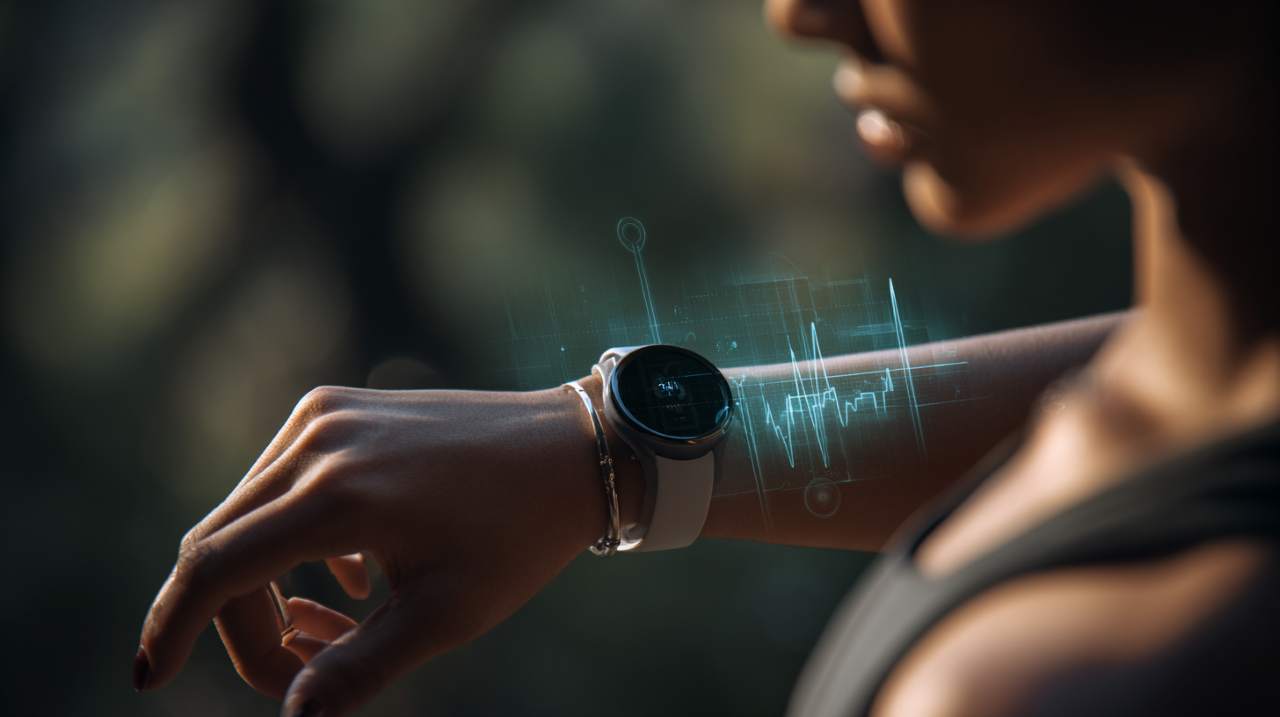
Wearable AI holds forth the possibility of improving human experience and enabling us to lead healthier, more connected lives. Wearable AI devices, including smart rings, fitness trackers, and smartwatches, have the potential to completely transform our daily lives.
For instance, in February 2024, Samsung is extending its AI technology to wearables after the successful debut of the Galaxy S24 series with Galaxy AI. The action is a major step in Samsung’s commitment to incorporating AI into all of its products and intends to transform digital health experiences. Going forward, this blog examines how AI is transforming wearables through real-time interactions, hyper-personalized customer engagement, and trust-building.
According to Research Nester Analysis, the wearable AI market is expected to reach USD 960.1 billion by 2037, having grown from USD 38 billion in 2024. This surge is driven by the increasing need for technology for managing personal health, the penetration of 5G smartphones, and the rise of IoT-enabled responsive applications. The market for wearable AI is also expanding as employers are implementing wearable AI technologies to improve safety protocols. Wearable AI solutions designed for workplace applications are further driving innovation and market growth.
Wearable AI is revolutionizing health and fitness tracking by providing real-time insights. Consequently, healthcare is transforming, thus promoting healthier and more connected lives. Wearable technology and AI enable continuous monitoring, which enables early intervention, and assists patients and healthcare professionals in making more informed decisions. Wearable technology in the future will use AI to recognize early indicators of chronic diseases even more accurately. Likewise, these wearables will be essential to precision medicine to meet the unique needs of each patient.
Wearable technology, such as smart rings and fitness trackers, smart canes and posture correctors, is improving accessibility and independence for those with particular needs. The fitness sector is changing as AI improves engagement and yields better outcomes. With the use of AI, businesses may now offer highly customized exercise programs to ensure sustained engagement. For instance, in July 2024, Samsung introduced the Galaxy Ring that increases the company’s line of wearables and concentrates on offering all-encompassing wellness experiences with the use of Galaxy AI technology. The Galaxy Ring is made to provide tracking, health monitoring, and personalized information in a small package.
Wearable technology for e-payments is another trend propelling the industry, driven by the growing demand for contactless payment methods for safer and more secure transactions. A new era of wearable payment systems is being ushered in by AI, which offers a smooth and cutting-edge method of payment gateway card transactions. By doing away with the need for physical wallets or credit cards, wearable technology improves convenience and sophistication. Smartwatches in particular have emerged as major participants, enabling users to link their credit or debit cards for quick and safe purchases. In August 2024, boAt partners with Mastercard for the launch of tap-and-pay functionality on smartwatches via the Crest Pay app. boAt customers may now use Crest Pay to make contactless payments with their smartwatches.
A compelling possibility exists when wearable AI devices are combined with augmented reality (AR), virtual reality (VR) technologies, which merge the real and virtual worlds to create immersive experiences. Wearable sensors and VR together may improve the tracking of mental and physical health and offer a thorough evaluation of the patient’s development. For instance, in October 2024, A UK Government innovation program announced to fund research trials in Scotland on wearables, virtual reality, and artificial intelligence to reduce drug-related mortality. The initiative features a new Alert App that allows drug users to self-monitor and will sound an alarm if they stop responding.
Workplace injuries can significantly affect organizations by lowering production and frequently necessitating long-term care for employees. The International Labour Organization estimated that 395 million workers globally had non-fatal work-related injuries. Wearable technology driven by AI is being used to assist companies in focusing on their safety measures. This is poised to transform workplace health and safety regulations, which will enhance worker health and happiness. For instance, in July 2024, Soter Analytics, a technology company, designed AI-driven wearable devices and software to improve workplace safety. Moreover, in roughly 30 seconds, Soter’s AI technology could recognize risks, hazards, and infractions. Similarly, in August 2024, at six locations in London, Pret A Manger has implemented body-worn cameras for its staff. As a safety precaution for team leaders, the coffee shop chain is testing the cameras, which are said to only activate under certain conditions.
Looking ahead, the wearable AI market is expanding at a never-before-seen pace worldwide due to the numerous potential prospects. Wearable AI has the potential to enhance human experience and drastically change our everyday lives. If combined with the appropriate technologies, wearable AI technology will help create a healthier planet. AI continues to influence our digital environment and transform how humans interact with technology.
Source: https://www.researchnester.com/reports/wearable-ai-market/3876
